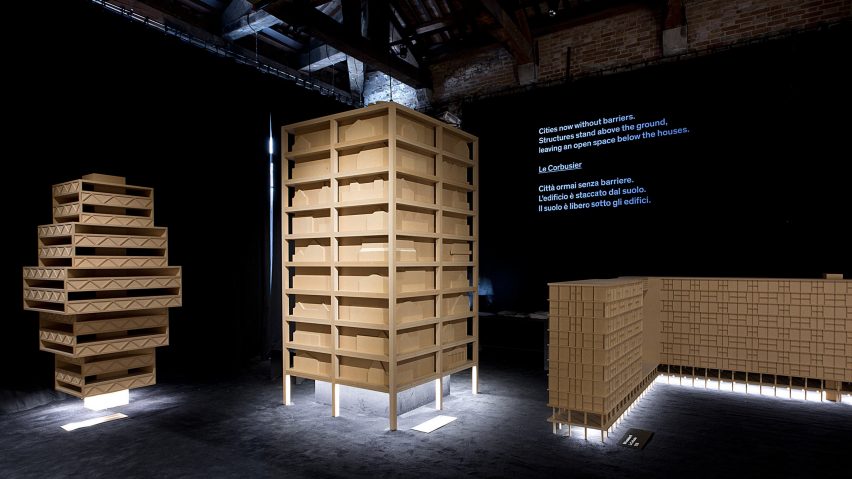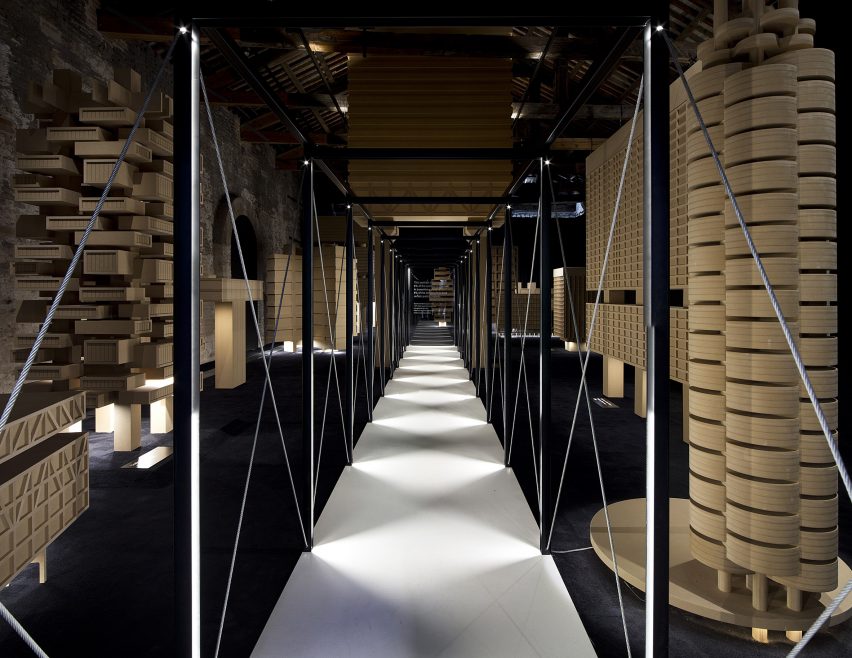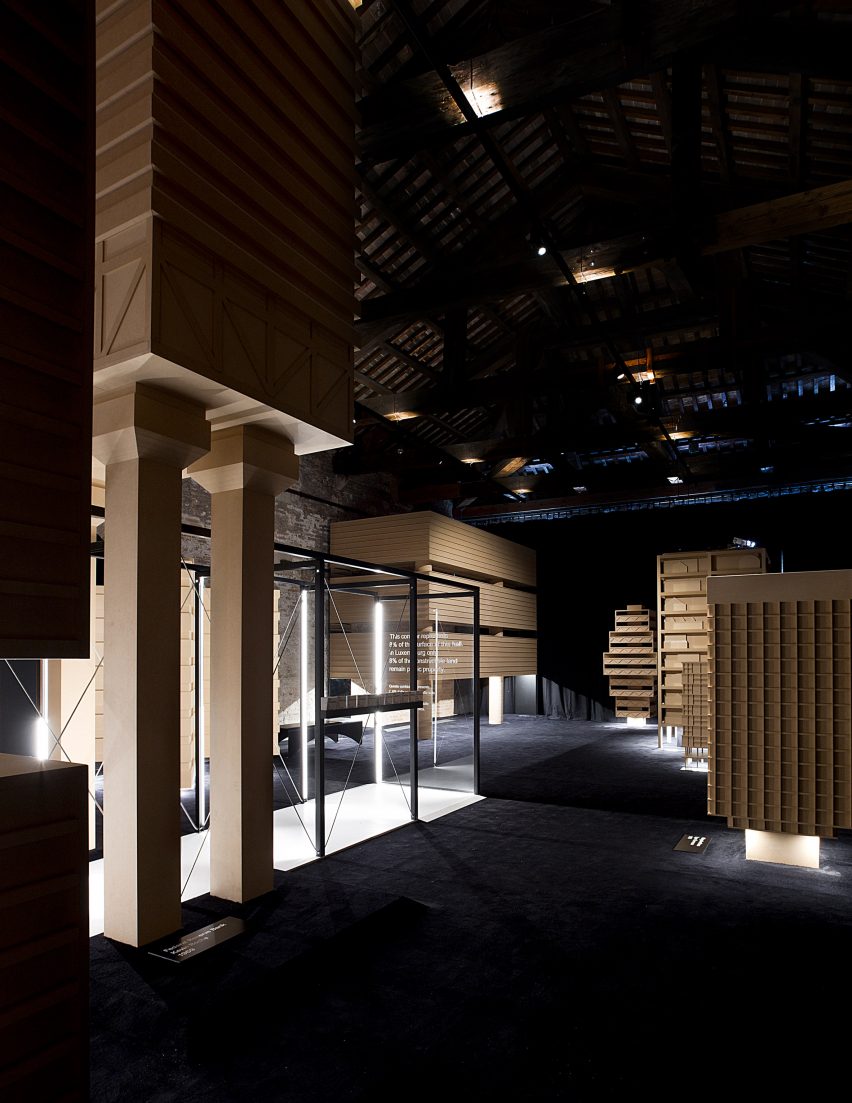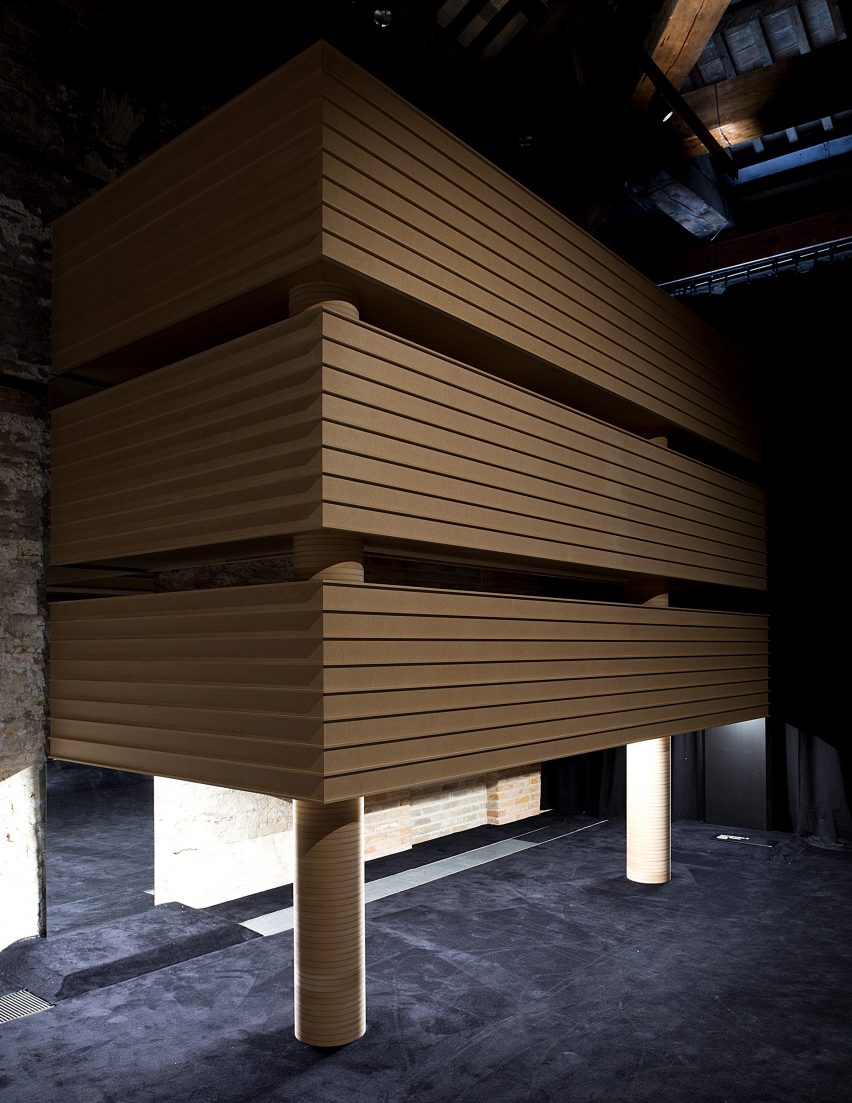
Luxembourg Pavilion calls for architects to "give more space to the public" by building on stilts
Projects by Aldo Rossi, Paul Rudolph and Le Corbusier show how buildings on stilts can be used to covertly introduce public space onto private land, according to the curators of the Luxembourg Pavilion at this year's Venice Architecture Biennale.
The exhibition features 13 towering MDF models of buildings on stilts, which were all proposed but never built.
According to exhibition curators Andrea Rumpf and Florian Hertweck, these examples show one way that architects can "give free space back to the public", even in heavily privatised cities and countries, like Luxembourg.

"We're having this problem of a country in economic and social growth, but with not enough land to build housing on – a problem that we share with a lot of other countries," explained Rumpf, who is director of the Luxembourg Centre for Architecture.
"The causes for this issue are property and the ownership of land," she told Dezeen. "We are pressing the people that used to live there before into the hinterland. So we have a responsibility to do something about that."
Just eight per cent of Luxembourg is state-owned
Research by Hertweck, an architecture masters student at the University of Luxembourg, formed the starting point for the exhibition, which is titled Architecture of the Common Ground.
He found that just eight per cent of land in Luxembourg is owned by the state. The remaining 92 per cent is privately owned, resulting not only in a huge shortage of land for housing but a spike in property prices on the borders with Belgium, France and Germany.
He and Rumpf then looked into possible solutions, and discovered numerous examples of unrealised buildings, drawn up between 1924 and 2018, that feature public spaces or facilities at ground level.

"Privatisation has been a process that has been going on since the second world war, and it was not a process that was not intended," said Rumpf. "It just happened, and I think the consequences have not been clear."
"This is a provocation to open discussion and open up new views on the problem," she added. "Even if we can't change politics as architects, we can react with programmes, with typologies and maybe negotiate with the client to give more space to the public."
Aldo Rossi and Le Corbusier proposed buildings on stilts
By showcasing the 13 projects as simple models, the curators invite visitors to judge them out of context.
One model presents Rossi's 1962 Locomotive 2 competition entry, proposed for Turin. The Italian architect proposed vast slab blocks raised on stilts, with a large public courtyard slotted in underneath.
Another features Le Corbusier's 1936 Ilôt Insalubre 6 concept for Paris. Like his famous Unite d'habitation housing model, the rectilinear apartment blocks were designed on pilotis, creating free space underneath for communal amenities such as a kindergarten, a cinema and a library.
Paul Rudolph's 1954 Trailer Tower concept offers a template for prefabricated towers. Proposed for a site near a caravan park in Sarasota, Florida, his design was for trailers arranged around four concrete pillars, with a relatively open area beneath.

The 13 exhibits also include two new proposals by University of Luxembourg students, showing how the typology could be applied in Luxembourg today.
One design shows how an apartment block with a small footprint could facilitate landscaping or space for urban farming. The other is a co-living block for the city's many single occupants, which favours communal facilities like laundry rooms and a gym, rather than private living spaces.
Curators want to show how architects can make a difference
The Architecture of the Common Ground is on show until 25 November 2018 as part of this year's Venice Architecture Biennale, after which it will go on show in Luxembourg.
This year's biennale was curated by Grafton Architects founders Yvonne Farrell and Shelley McNamara with the title Freespace. In an interview with Dezeen, the pair said they hoped their exhibition would show how architects can make a big impact, even when working "at a very small scale".
Rauf hopes to do just that – by instigating debate about how architects, as well as policy makers, can play a role in creating extra public space in the city.
"In a country where 92 per cent of the population is an owner, it hurts to hear that maybe this is causing the problem and maybe this has to change," she added. "We have to change mentalities, not only laws."
Photography is by Alberto Sinigaglia.